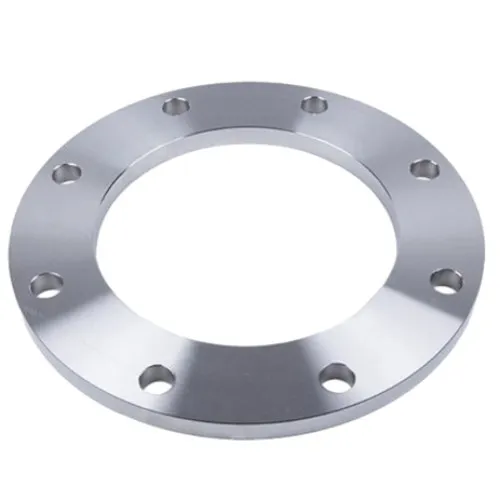-
Cangzhou Yulong Steel Co., Ltd.
-
Phone:
+86 13303177267 -
Email:
admin@ylsteelfittings.com
- English
- Arabic
- Italian
- Spanish
- Portuguese
- German
- kazakh
- Persian
- Greek
- French
- Russian
- Polish
- Thai
- Indonesian
- Vietnamese
- Zulu
- Korean
- Uzbek
- Hindi
- Serbian
- Malay
- Ukrainian
- Gujarati
- Haitian Creole
- hausa
- hawaiian
- Hebrew
- Miao
- Hungarian
- Icelandic
- igbo
- irish
- Japanese
- Javanese
- Kannada
- Khmer
- Rwandese
- Afrikaans
- Albanian
- Amharic
- Armenian
- Azerbaijani
- Basque
- Belarusian
- Bengali
- Bosnian
- Bulgarian
- Catalan
- Cebuano
- China
- China (Taiwan)
- Corsican
- Croatian
- Czech
- Danish
- Esperanto
- Estonian
- Finnish
- Frisian
- Galician
- Georgian
- Kurdish
- Kyrgyz
- Lao
- Latin
- Latvian
- Lithuanian
- Luxembourgish
- Macedonian
- Malgashi
- Malayalam
- Maltese
- Maori
- Marathi
- Mongolian
- Myanmar
- Nepali
- Norwegian
- Norwegian
- Occitan
- Pashto
- Dutch
- Punjabi
- Romanian
- Samoan
- Scottish Gaelic
- Sesotho
- Shona
- Sindhi
- Sinhala
- Slovak
- Slovenian
- Somali
- Sundanese
- Swahili
- Swedish
- Tagalog
- Tajik
- Tamil
- Tatar
- Telugu
- Turkish
- Turkmen
- Urdu
- Uighur
- Welsh
- Bantu
- Yiddish
- Yoruba

Nov . 27, 2024 04:28 Back to list
Current Trends in Metal Pipe Pricing and Market Analysis
Understanding Metal Pipe Prices Factors and Trends
Metal pipes play a crucial role in a multitude of industries, including construction, plumbing, gas and oil transport, and manufacturing. The price of metal pipes can fluctuate significantly due to various factors, including raw material costs, market demand, energy prices, and even geopolitical events. This article aims to shed light on the factors influencing metal pipe prices and the current trends impacting the market.
Factors Affecting Metal Pipe Prices
1. Raw Material Costs The primary driver of metal pipe prices is the cost of raw materials, such as steel, aluminum, and copper. These materials are often subject to considerable price swings based on availability, mining operations, and global demand trends. For instance, when steel prices rise due to increased production costs or supply chain disruptions, metal pipe prices typically follow suit.
2. Demand from Key Industries The demand for metal pipes is closely tied to the performance of key industries. Construction, oil and gas, transportation, and automotive sectors significantly influence the market. For example, a booming construction industry often leads to increased demand for pipes used in plumbing and structural applications, consequently driving up prices.
3. Production Costs Factors such as labor costs, energy prices, and manufacturing efficiency also impact the overall cost of producing metal pipes. An increase in energy prices can lead to higher production costs, which manufacturers may pass on to consumers in the form of higher prices. Companies that invest in more efficient production techniques may gain a competitive edge, allowing them to offer more stable prices.
4. Geopolitical Events Global political dynamics can greatly influence metal prices. Trade policies, tariffs, and sanctions can disrupt supply chains and affect the availability of essential materials. For example, tariffs imposed on steel imports can lead domestic producers to increase prices due to reduced competition from foreign manufacturers.
5. Environmental Regulations Increasingly stringent environmental regulations can impose additional costs on manufacturers, especially in industries like mining and construction. Compliance with these regulations may require significant investments in cleaner technologies or practices, and these costs may subsequently be reflected in the prices of metal pipes.
metal pipe price

Current Trends in Metal Pipe Pricing
As of late 2023, the metal pipe market has experienced various trends that have shaped pricing and availability.
- Supply Chain Recovery Following the disruptions caused by the COVID-19 pandemic, supply chains are gradually stabilizing. However, some challenges remain, particularly in the logistics sector, which can affect delivery times and costs. As suppliers work to rebuild their inventories, prices may experience some volatility before reaching more stable levels.
- Green Initiatives and Material Substitutes An increasing emphasis on sustainability is impacting the material selection for piping. Industries are exploring alternative materials that may reduce the carbon footprint, such as recycled metals or more durable composites. While this shift could stabilize metal pipe prices in the long term, initial investments in new materials and technologies could lead to short-term price increases.
- Technological Advancements Innovations in manufacturing processes, such as automated production and 3D printing, are starting to reshape the metal pipe industry. These technologies can lead to reduced production costs over time, potentially affecting pricing strategies and market dynamics.
- Global Economic Conditions Economic indicators such as inflation rates, employment levels, and consumer spending directly affect market demand for metal pipes. A strong economy typically boosts construction and manufacturing activity, resulting in higher demand and prices. Conversely, economic downturns can lead to reduced demand and lower prices.
Conclusion
The metal pipe market is a dynamic environment influenced by a myriad of factors ranging from raw material costs to global economic conditions. Understanding these variables can provide insights into pricing trends and industry forecasts. As industries continue to evolve in response to both economic needs and environmental concerns, the pricing of metal pipes will likely adjust, reflecting the latest, most efficient practices and materials in the market. For businesses and consumers alike, staying informed about these trends is essential for making educated purchasing decisions in an ever-changing landscape.
Latest news
-
ANSI 150P SS304 SO FLANGE
NewsFeb.14,2025
-
ASTM A333GR6 STEEL PIPE
NewsJan.20,2025
-
ANSI B16.5 WELDING NECK FLANGE
NewsJan.15,2026
-
ANSI B16.5 SLIP-ON FLANGE
NewsApr.19,2024
-
SABS 1123 FLANGE
NewsJan.15,2025
-
DIN86044 PLATE FLANGE
NewsApr.19,2024
-
DIN2527 BLIND FLANGE
NewsApr.12,2024
-
JIS B2311 Butt-Welding Fittings LR/SR 45°/90° /180°Seamless/Weld
NewsApr.23,2024











